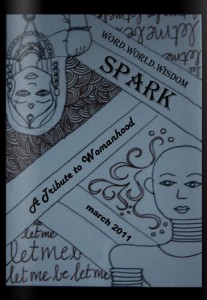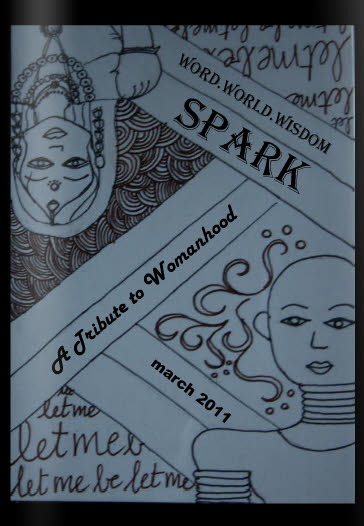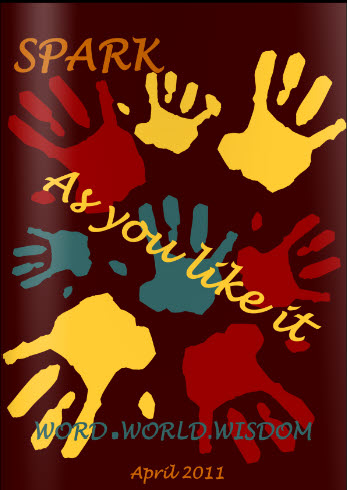by Meera Sundararajan
[box]The way a woman is dressed almost decides her personality and fate. A woman’s dressing sense is seen as the reason for sparking sexual harassment from eve teasing to rape. Why does it have to be so? Meera Sundararajan explores this serious issue from different perspectives. Her write-up is in line with the March 2011 theme, ‘A Tribute to Womanhood’.[/box] [box type=”info”] MONTH: March 2011
MONTH: March 2011
THEME: A TRIBUTE TO WOMANHOOD
CONCEPT: In line with Women’s Day being celebrated in March, this month was the perfect time to bring out a women’s special issue.
FEATURED PERSONALITIES OF MARCH 2011:
Indian Homemaker, Blogger
Mallika Dutt, CEO, Breakthrough
Shaheen Mistri, CEO, Teach for India
Urvashi Butalia, Director, Zubaan Books
The March 2011 is very special to us for the people we featured as our ‘Voices of the Month’. Their life stories were so inspiring and the conversations so enlightening that we felt truly honoured to have spoken to Shaheen Mistri, Mallika Dutt, Urvashi Butalia and Indian Homemaker. Inspiring, thought-provoking and serious – that’s how the edition turned out. If Women’s Studies is a topic of interest for you, then this is an issue you must check out![/box]
I remember an incident in college. We were getting ready to go for a movie and I could not find my dupatta. As I spent the precious few minutes left searching frantically for it, I was annoying those half a dozen friends who were crowded in my room waiting for me to leave. I finally decided to go without it, all the while feeling most self-conscious, until one of my friends asked me, “What is your problem? Why are you so embarrassed about your body?”
Thinking back, I cannot but deny the wisdom of those words. Why do we women constantly feel embarrassed about our bodies? Why are we apologetic about having breasts or showing our legs?
I think the answer lies in the way society is organised. In male dominated societies such as ours, a woman’s life and the rules that govern it are not hers. By extension, her sexuality is also not within her control. Families try to control it, reining it in through what they term “modest dressing”!
So does that mean we have to limit ourselves to what is acceptable to society?
Before I answer that question, I would like us to reflect about what this “society” is. It is a collection of people like you and me. While it still continues to be male dominated, education and economic opportunities have provided spheres for women to exercise choices. When it comes to the ability to exercise a choice and express herself though, society frowns upon a woman who tries to divert from the so-called “accepted norms”. These norms, like behaviour, are governed by unwritten rules which everyone follows. Parents (usually mothers) impose them on daughters as part of her upbringing. A girl from a “good family” is not expected to dress in a certain sort of way. It is funny that families should rate themselves based on the way their women dress!
The argument that is often given about the need for “modest” dressing is safety, which, I think, is probably the biggest myth going around! On the face of it, we can argue that it’s not just women who are dressed immodestly face any violation on the streets. But let us examine the reasons behind this idea more closely.
Dress codes are normally governed by culture which is diverse. It changes with societies. For instance a woman in West Asia would be considered “immodest” if she were to leave her head uncovered while inIndia, covering the head is not a “modesty” requirement. So the issue is whether these so called “safety” concerns would change across regions. On the face of it, the answer would be YES. But if we look deeper to see what drives this need for “modest” dressing, it is something I had mentioned earlier – this societal desire to control a woman’s sexuality.
Expressing sexuality in a way an individual desires is part of her or his ability to exercise choices. In patriarchal societies such as ours, this is one of the major challenges for women – the freedom to exercise a choice of any sort. Most often, decisions even with regard to her own life are made for her by others. So it is not surprising that when a woman tries to express her sexuality or her creativity in her dressing it is perceived as a rebellion against “culture, tradition” etc. Even the basic factor of convenience or comfort – such as preferring a pair of jeans over salwar kameez, for instance – is perceived as an expression of her sexuality and therefore to be interpreted as a “come hither” message for all males around!
As a society we are a bunch of hypocrites. We talk about education and employment for women but we have not evolved to the extent where we are comfortable dealing with a woman’s confidence. We would like her to have skills and knowledge just so that she can continue to contribute to the workforce in any sector and bring in much-needed money into the house. But the moment she starts expressing herself – either through her sexuality or individuality – we feel threatened. What we see in the form of “moral policing” is nothing but a kind of public outrage that women are breaking open those silken shackles and treading ahead.
What is worse, this moral policing is accompanied by character judgments determined simply by the way she dresses. We hear words like “loose” woman, “cheap” girl thrown about casually. But seriously, isn’t a woman’s character all about honesty, integrity and values than the extent to which she displays or covers her body parts? If a woman’s cleavage disturbs a man, it’s a reflection of his character – he should avoid looking at it!
Any kind of change is usually met with resistance from both within and outside. Our own socialisation as women has been such that we are taught to dress in a certain way and we are scared about coming out of that thought process despite our education and economic independence. With regard to external resistance, yes, there are men who still think that a woman is a man’s property and therefore her sexuality too is something at his command. He gets threatened when she exhibits it confidently and therefore tries to react by calling her a “slut”. And it is not just men who think that way, there are thousands of women who are also trained to think that way – they envy another of their kind who has the confidence that they lack!
This resistance to change is also exhibited by the law enforcers themselves who are actually expected to protect citizens. The recent “Slut walk” event planned in December atBangaloredid not receive police permission on reasons of “security”. The world’s largest democracy is unwilling to accept a peaceful protest march simply because the “larger society” does not approve of it, perhaps because the police are after all a part of this same society subject to the same prejudices!
There have been studies that have clearly proved that rape is not about sexual attraction but about power. It is the power exercised by men over women for transgressing those invisible boundaries in their lives, with an entire “support system” including dress codes assisting in maintaining these power relations.
Dressing, therefore, is a very complex issue. It is a nuanced expression of power structures in any society. in the name of “culture”, a woman carries around her the restrictions that society has imposed upon her. We have a long way to go, but the fact that some women are breaking out of these codes is a beginning; here’s hoping this is accompanied by realisation that one section of the society has no right to control another’s choices!
Meera Sundararajan works for what she calls the “change marketing” sector, otherwise known as the NGO sector. She has been “selling change” for nearly two decades now. Like most Indian women, she enjoys multiple identities – wife, mother, daughter, daughter- in- law, aunt; but unfortunately, none of these roles run true to type! She speaks five Indian languages fluently and also exhibits the sub-regional eccentricities that go with these languages. she loves reading and inflicting on others what she writes. Meera blogs athttp://meerareflections.blogspot.com
[box type=”download”] If you have trouble opening the PDF, please right click on the button and select ‘Save Link As/Save Target As’. This will help save the PDF to your computer. If you still have trouble, drop us a mail at editors@sparkthemagazine.com and we will mail you the PDF straight to your inbox! DON’T MISS THE PDF EXPERIENCE![/box] [button link=”https://sparkthemagazine.com/wp-content/uploads/2012/01/spark-january-2012.pdf” color=”red” newwindow=”yes”] Read it all at one go! Download the PDF here![/button] [button link=”http://issuu.com/sparkeditor/docs/spark-january-2012?mode=embed&layout=http%3A%2F%2Fskin.issuu.com%2Fv%2Fcolor%2Flayout.xml&backgroundColor=000000&showFlipBtn=true” color=”green” newwindow=”yes”] Flip and read like a mag on the e-reader! Click here![/button]
[facebook]Share[/facebook] [retweet]Tweet[/retweet]








